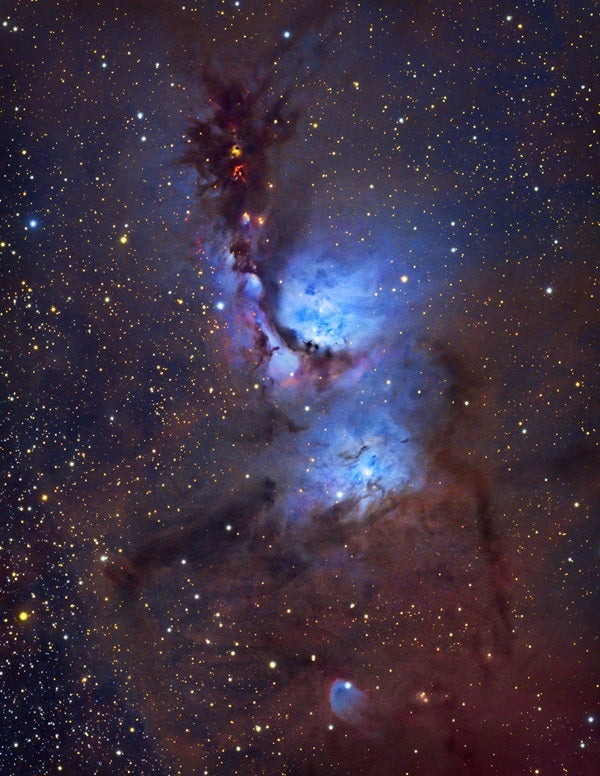As we reach Oscar time — late February or early March — the lessons of Hollywood come to mind. We did a big article on this some 20 years ago and felt honored to get praise from famed comet hunter David Levy and others. So let’s go there again, with some new suggestions.
The idea is simple. Most backyard astronomers excitedly show their favorite celestial wonders to family, friends or even visiting school groups. It’s memorable for everyone, and it promotes astronomy. Our issue: Can you improve your telescope “show” so that your visitors are even more turned on to science? If so, it could change young minds and perhaps launch a lifelong hobby, or even a career choice. School kids don’t get telescope tours very often. This might be the only occasion of their childhood. Make it count!
I’ll be blunt: Most backyard astronomers offer only an OK presentation. The biggest mistake is showing their favorite objects first, then turning to ever-fainter targets and not wrapping it up until the crowd gets restless. The astronomer might wave goodbye saying, “Let’s do this again sometime!” But for most of the kids, it’s now, “Been there, done that.”
Hollywood perfected the secrets of a good show long ago. They can work for us, too. You want to wow them, teach them, entertain them. In our smartphone age, fewer and fewer young people do hands-on activities like canoeing or bird-watching. You are competing with the universe on their little screens. They’ve already seen glorious Hubble images. Can you top that? (Yes, you can, but you must know how!)
Their experience will be a function of what they expect versus what they actually see in your telescope. For example, they’ve seen astonishing magazine and online images of the Andromeda Galaxy (M31) and Mars. But through your scope, M31 is a smudge, and Mars is a tiny jiggling blur. You cannot wow them with these. Don’t try. They know nothing about astrophotography’s advantages, so they’ll merely think your telescope is pathetic. Never show either of those objects, ever. (Well, not quite never. If Mars is within two months of opposition and you have a rare perfectly steady night, go for it. But that’s still essentially never.)
Instead, choose an object they’ve never seen. Then your image won’t fail due to comparisons or expectations. The big exception is Saturn. It reliably astonishes at the eyepiece because there’s some crazy vibe or essence when gazing directly at it that no photo can capture.
“START WITH A BRIGHT KNOCKOUT TREAT, LIKE THE MOON OR SATURN, AND PLAN TO FINISH WITH YOUR FAVORITE OBJECT.”
Plan on showing five or six objects. Then end it. You want them to go away wanting more, craving more astronomy. Leave them a little hungry.
Revolve your menu around diversity. With, say, an 8-inch telescope, your greatest “wow objects” are a globular cluster like the Hercules Cluster, the Orion Nebula, the Moon when it’s between six and 11 days old, Saturn, Jupiter, a low-power treat like open cluster M35, a colorful double star like Albireo, and one secret esoteric goodie, which we’ll get to in a moment. All of these look fine in less-than-perfect skies, which is probably what you have.
Start with a bright knockout treat, like the Moon or Saturn, and plan to finish with your favorite object. That’s right, save the best for last. In Hollywood, the climax always has the biggest, most expensive action. Leave them smiling.
In between, vary the action. At one point you can do a faint target, but prep them for it first. If you have a 12-inch scope, then sure, go for the Whirlpool Galaxy or NGC 4565. But first show them a photo of it; prepare them for the spiral arms or dust lane, tell them that many people can’t see it, and teach them about averted vision. Shazam! When they do see those features, they’ll shout, “I see the dust lane!” They’ll have a sense of accomplishment. Without any prep, they may instead merely mumble, “Um, that blob near the bottom, is that what I’m supposed to be seeing?” and you’ve blown it.
Now for that change-of-pace object — something very different, to keep them intrigued and entertained. Me, I attach a spectroscope and show them a bright star, usually spectral class A, like Vega or Sirius. Whoa! Gorgeous super-intense colors unlike anything else. And those obvious black hydrogen lines let you explain that this is how astronomers know what stars are made of. Their jaws will drop.
Or you might pass around binoculars and have them look at the Pleiades. Be sure to narrate it with some of M45’s cool lore and legend. Then show your best object and say good night. They’ll be hooked.
And you’ll have earned that Oscar.











